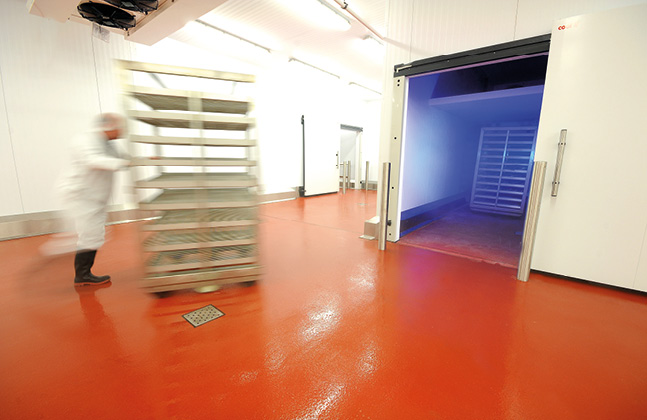Population growth around the world has led to food and beverage producers scaling up and intensifying their operations to accomodate the increase in demand.
However this development makes the potential danger from contaminated foodstuffs ever more serious and problematic, so governments, international health authorities and end users are insisting on ever more stringent hygiene regulations to minimise health concerns and secure food supply chains.
The food and beverage industry within Asia in particular is facing increasing calls to comply with the latest rules. Whilst many nations in Asia have precisely set out guidelines and laws, others do not, however high hygiene standards based on benchmarks from international bodies or best practise guidelines must still be maintained to avoid disease outbreaks and to guarantee the trust of international buyers.
Ensuring a sanitary environment is a crucial aspect of most food safety litigation, and the regulations covering food production will typically include rules on the design, maintenance and management of the building.
Hygiene Challenges and Flooring Solutions
There are a number of steps that building operators can take to sufficiently prevent the growth of pathogenic microorganisms in a building – and ensuring a clean floor is one of the principle factors to achieving this.
It is often the floor that becomes the most contaminated area of a production site. To counteract this the Food and Agriculture Organisation (FAO) recommends that the floor is “smooth finished and without cracks” as seams, joints, grout lines and gaps can become ideal breeding sites for contaminants that could spoil consumable goods and potentially lead to fatal foodborne illnesses.
Resin flooring solutions can ensure a smooth, monolithic and crack free surface that will not only dramatically improve hygiene, but also protect the building’s concrete substrate and provide a level, reliable platform for the day-to-day operation of the facility. This material can also withstand the rigours of a production environment to ensure its finish won’t deteriorate when faced with sustained physical abuse.
Intensive cleaning routines are essential to complying with hygiene regulations. However the hot water used to remove unwanted chemicals and production by-products could in fact adversely affect the building’s hygiene levels. This is because the thermal shock from the water could crack, delaminate or erode the surface. To protect against this the floor needs to expand and contract with the temperature changes at the same rate as the concrete substrate.
Having an impervious, non-porous floor is an important aspect mentioned in many food safety laws around the world. Producers intending to export to Europe should note that the European regulations recognise that this is an important factor, as these laws insist on sites having easy to clean and regularly disinfected floors, which necessitate an impervious surface.
Asia F&B Regulations – Quick Facts and Handy Hints
- The Food and Agriculture Organisation (FAO), International Food Safety Authority Network (INFOSAN) and World Health Organisation (WHO) are some of the key international bodies that provide advice on the design and maintenance of food and beverage production facilities.
- Malaysia’s Food Hygiene Regulations (2009) state that “food premises must be maintained at all times in a good, clean and tidy condition”.
- Commentators on the global food industry have noted that access to the food export market will increasingly depend on the capacity of producers to meet regulatory requirements.
- Singapore’s Sale of Food Act forbids selling food that has been manufactured, prepared, preserved, packaged or stored under “insanitary conditions” that might contaminate food or render it unfit for consumption.
- The FAO’s General Principles of Food Hygiene states that the facility’s design should minimise contamination and that surfaces are “durable and easy to maintain and clean”.
- Thailand’s Ministry of Public Health has implemented a surveillance and monitoring programme on food, focusing specifically on contamination from microorganisms.
- The corner where the floor meets the wall is an area of potential bacterial growth. To make it easier to clean the FAO’s guide to establishing production facilities states that “during construction of the floor, it should therefore be curved up to meet the wall”.
- The Handbook of Hygiene Control in the Food Industry advises that resin floors are ideal for wet environments, as they can have anti-slip aggregates added into the mixture.
A reliable, sturdy and hygienic floor can provide a wealth of benefits to food producers, as it will allow for easier cleaning and more efficient production whilst simultaneously satisfying the demands of regulatory authorities.
You can read an in depth article on this topic by David McNeece, International Marketing & Business Development Manager for Flowcrete, in this month’s Asia Food Journal.
To find out more about how resin floors can help food and beverage production facilities meet regulations get in touch with your local Flowcrete office.
You can also ask a question below about how to achieve an ultra hygienic floor finish or you can tweet us @flowcrete or find us on LinkedIn.







